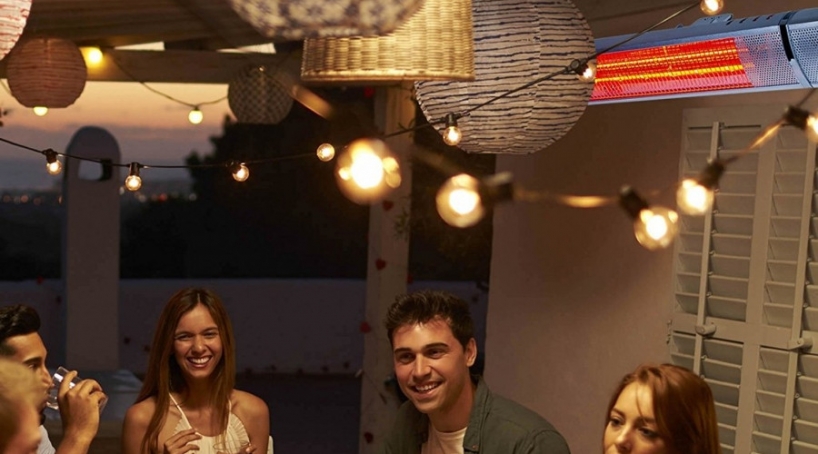
March 19th, 2021 by
After a long winter (and indeed, a long year!) warmer weather and longer days will soon be here and we can look forward to spending time in our gardens and (finally) seeing our loved ones again. This year of all years, it seems more important than ever to create lovely social spaces outdoors where we can make up for lost time.
While we all love a garden party and a barbecue, we know all too well that the weather isn’t always conducive to outdoor entertaining. However, we’re not defeated that easily: all you need is a parasol or two and a patio heater and you’re prepared for anything!
 A good outdoor heater means that you can enjoy your garden well into the evening when it turns cooler, but it also extends the period you can make use of your garden: creating a great space to spend time from early spring right through to autumn – perfect for making the most of restrictions starting to lift at the end of March.
A good outdoor heater means that you can enjoy your garden well into the evening when it turns cooler, but it also extends the period you can make use of your garden: creating a great space to spend time from early spring right through to autumn – perfect for making the most of restrictions starting to lift at the end of March.
As with any appliance, it pays to conduct a bit of research into what you’re buying, and a patio heater is no exception. Here are some of the most common features to look out for:
Infrared v Convective
You don’t need to be a heating engineer or a scientist to buy a heater but is helpful to understand the principles of these different forms of heating. Convective heat is what your central heating system uses: radiators heat up and warm the air around them. This warm air rises and then cools and falls back down where it is heated again. This circulates in a constant loop, making the room warmer. Infrared heat is a form of electromagnetic radiation. This sounds a bit scary but it’s the same principle that the sun uses to transfer heat. Instead of warming the air, infrared heats objects (furniture, walls, people, plants, trees etc) and this increases the ambient temperature of the space.
As you can imagine, conductive heat requires walls and ceilings to contain warmth and keep it circulating – which is why running central heating with the windows open is a bad idea. Infrared heat is much more effective outdoors (it’s the same as the sun after all!). While you can buy outdoor heaters that offer either type of heating, infrared will work most effectively.
IP Ratings
Most outdoor heaters will have some kind of IP rating. This tells you how much protection they have from things like water and dust. Obviously, any kind of appliance you use outdoors needs to be able to resist certain weather conditions. Look out for IP54, which is protection from dust and sprayed water. IP55, which is dust and water jets. And IP65, which is total protection. Heaters with a lower rating may need to be taken in at night or pulled under cover if it rains.
Power Output
This one is self-explanatory: the higher the kilowatt (KW), the more powerful and therefore will be warmer and capable of heating a larger area. Power levels can range from 1KW to around 4KW, although 2KW is very common. Choosing a higher KW will give you more options and the ability to sit outside when it’s much cooler. Generally, a good rule of thumb is to choose as powerful a patio heater as you can afford.
Operation
All heaters have controls on the unit itself, whether that be a switch or a pull cord, but some models also come with a remote control, meaning you can adjust the heat and turn it on or off without even leaving your chair!
MYLEK Outdoor Patio Heater with Remote Control 3KW
Price: £115.00
Buy Now
Freestanding v Wall Mounted
Freestanding heaters are great if you want the option of being able to move to different areas of the garden (remembering, of course, that you will need access to power). Wall-mounted heaters are good for more fixed seating areas plus great space savers (meaning room for more guests/chairs!).
Extra Features
Look out for other added extras such as lights (for helping to keep the party going) and even motion sensors that will trigger the heater to come on when it senses movement but turn off when there’s nobody there: great for energy efficiency.
Get ahead of the game
As with most outdoor or weather-related items (think fans, paddling pools, sledges etc), many people only really start thinking about buying them when they need them and often this can mean limited choice and delayed delivery. Buying now allows you to beat the crowds, plus you’ll be ready to entertain guests in the garden as soon as the rules change.
Comments
Leave a reply
Your e-mail address will not be published. All fields are required



